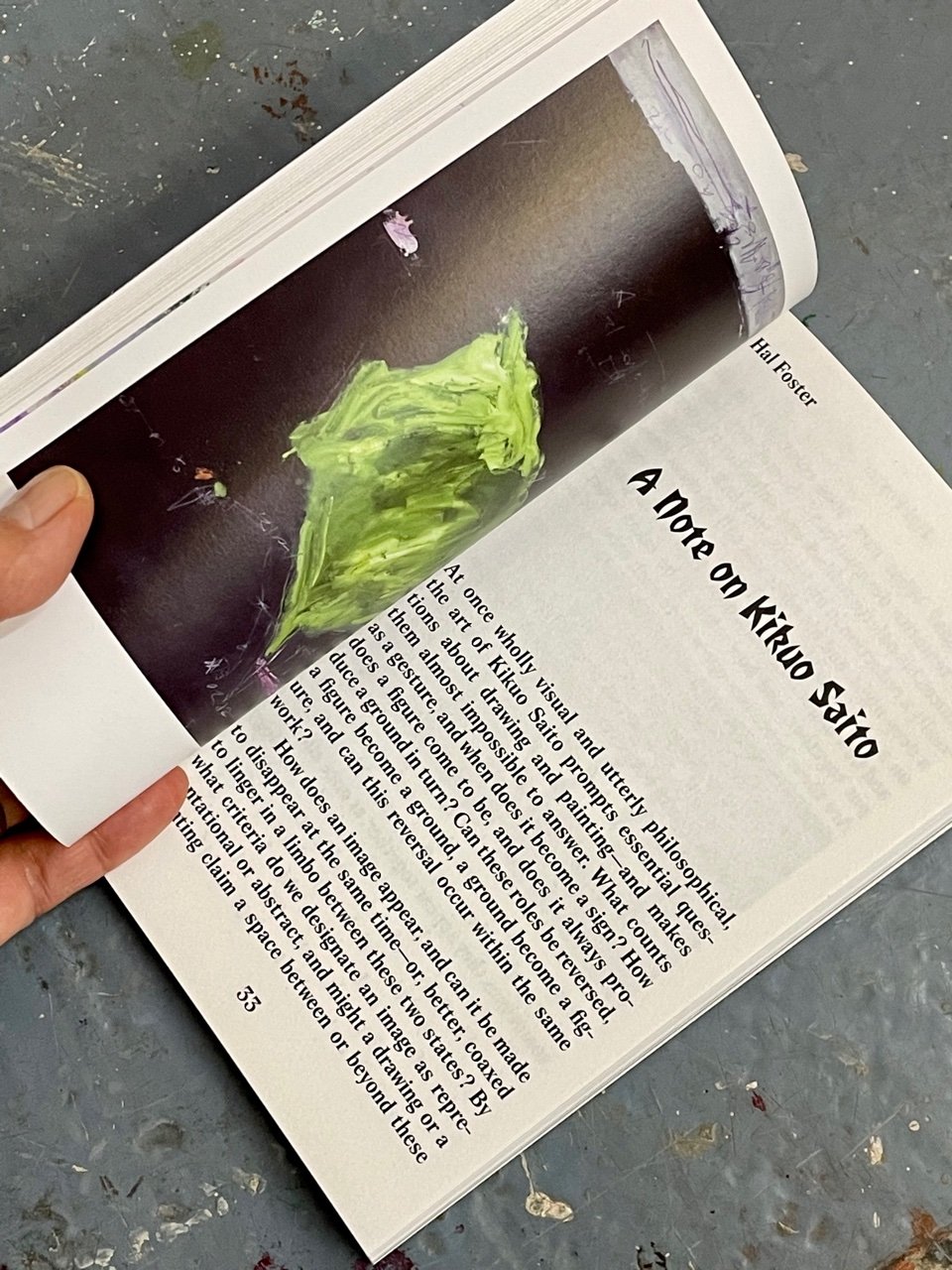Kikuo Saito’s exhibition at James Fuentes Gallery, New York
Kikuo Saito
COLOR CODES
Curated by Christopher Y. Lew
March 8 – April 20, 2024
James Fuentes is thrilled to announce the inaugural exhibition at the gallery’s new Tribeca location, Kikuo Saito, Color Codes, curated by Christopher Y. Lew.
Color Codes will be the most extensive presentation to date of the late Japanese-American artist’s so-called “Monochromatic” works, large-scale paintings made between 1990 and 1993 at Saito's studio in Tribeca, located only six blocks from the gallery’s new home at 52 White Street.
Returning to the artist’s paintings of the early 1990s, which lie at the heart of his five-decade career, this exhibition reinforces James Fuentes' dedication to the continuously evolving Downtown scene. Rooted on the Lower East Side for its first two decades, James Fuentes is committed to surveying, constructively revising, and creatively shaping the history of New York art in situ—showing the work of Downtown artists in the diverse and once-again thriving neighborhood that originally brought it to life. In line with this, 52 White Street is itself notable as the original home of The Collective for Living Cinema, founded there in 1973. Running for 19 years, the Collective was an artist-run cooperative and multi-disciplinary venue described often as the liveliest New York film venue of its time.
Kikuo Saito, Color Codes follows up on the gallery's first presentation of Saito's landmark work in 2021, which offered an introduction to the breadth and depth of the artist's output by collecting works thematically centered around the color black—the color of all colors. Advancing this conversation, Color Codes takes on the artist's most fundamental concern, experimentation with the various hues and shades of what are traditionally referred to as individual colors, investigating the richness of expression that can be found in confining canvases to single color-palettes—”Monochromes”—such as red and blue, which in Saito's hands become anything but primary. To Saito, the “Monochrome” is much more than a governing spectrum, but a thoroughgoing study of the vast potentials inherent within a notionally limited color range, as the color being treated becomes the field for odd scrawled and scribbled messages—”codes” that defy interpretation.
Saito, an immigrant to New York from Tokyo, was always fascinated by the pictorial capacities of language, treating words as images, and linguistic characters as theatrical characters. As deeply involved with performance as he was with painting, Saito created these codes not only to move the eye around the canvas, but also to suggest how bodies might move or be moved across a stage, as if color itself were being dramatized.
Upon his arrival in the United States in 1966 at the age of twenty-six, Saito immersed himself in the experimental, interdisciplinary climate of New York’s Downtown art scene, developing distinctive styles in various media that united color and choreography, bringing theater into painting and painting into theater. While he remained informed and inspired by this interplay throughout his life, by 1979 Saito had committed himself wholly to the medium of painting, founding an inimitable practice at the intersection of both Japanese and New York avant-gardes, innovating and cross-pollinating the principles of the Gutai group and Abstract Expressionism, which had never previously communicated or been connected so cleverly or clearly. These connections converge with greatest motion and emotion in the “Monochromes,” in which the energy of live performance and the meditative calm of the studio seem to coexist in gracefully concentrated and consummately subtle balance.
It is an honor for James Fuentes to present these eight canvases, most of them never shown before, within the surroundings in which they were made—in an exhibition intended to provide a window into a significant moment, both for Saito and Downtown art in general, in all its brilliant color.
Kikuo Saito (b. 1939, Tokyo; d. 2016, New York) was an interdisciplinary artist who served as a painting instructor at the Art Students League of New York, an artist-in-residence at Duke University, and visiting professor at Musashino Art University in Tokyo. Saito’s legacy is sustained at KinoSaito, a non-profit art center in Verplanck, New York, dedicated to nurturing abstract and cross-disciplinary art practice through offering residencies, performance space, workshops, art studios, and classrooms. Saito’s work has been the subject of solo exhibitions at KinoSaito, Verplanck; Fort Lauderdale Museum, Fort Lauderdale; Duke University Museum of Art, Durham; Galerie Rüdiger, Schöttle, Munich; Altman Siegel, San Francisco; James Fuentes, New York; and Loretta Howard, New York, among others. Saito’s theater work has been staged at La MaMa Experimental Theatre Club, New York; Duke University Museum of Art, Durham; the Byrd Hoffman Foundation, New York; Opera Comique, Paris, France; and Iino Hall, Tokyo, Japan. The artist’s work can be found in the collections of the Museum of Modern Art, New York; the Whitney Museum of American Art, New York; Nasher Art Museum, Durham; The Aldrich Contemporary Art Museum, Ridgefield; and Edmonton Art Gallery, Edmonton, Canada.
Christopher Y. Lew is the founder of C/O: Curatorial Office. He was the founding Chief Artistic Director of the Los-Angeles art foundation Horizon, and a former curator at the Whitney Museum of American Art where he was co-curator of the 2017 Whitney Biennial and of Salman Toor: How Will I Know (2020), organized Pope.L: Choir (2019) and Kevin Beasley: A view of a landscape (2018), and mounted the first US solo exhibitions for Sophia Al-Maria, Rachel Rose, and Jared Madere. Prior to joining the Whitney, he was Assistant Curator at MoMA PS1. Lew has contributed to several publications including Art AsiaPacific, Art Journal, Bomb, Huffington Post, and Mousse. Lew has worked closely with James Fuentes and his staff as well as the Kikuo Saito Estate to develop this exhibition as well as broader programmatic strategies.
In the News
Kikuo Saito’s first small book published by James Fuentes Press
Contributing Author: Joshua Cohen, Hal Foster, Reiko Tomii, Karen Wilkin, Sarah Strauss, Franklin Einspruch, Rachel Wetzler
For purchases please contact: info@kinosaito.org
Size: 7” × 4 1/4”, 136 Pages, $15


